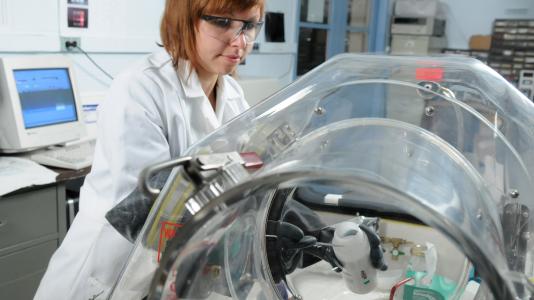
These new coolants can lessen the need for heat exchangers, which could result in smaller cooling systems and lighter vehicles.
“Fluids containing nanoparticles have a proven ability to increase thermal conductivity and heat transfer and hence reduce the size, weight and number of heat exchangers for cooling power electronics,” said Argonne researcher Jules Routbort.
Using silicon carbide nanoparticles from partner Saint Gobain, Routbort and his colleagues have created an ethylene glycol/water nanofluid that carries heat away 15 percent more effectively than conventional fluids. And working with industrial partner Valvoline, they’ve developed a graphite-based nanofluid that has an enhanced thermal conductivity 50 percent greater than the base fluid, which would, under specific conditions, eliminate the need for a second heat exchanger for cooling power electronics.
To develop nanofluids for heat transfer (i.e., cooling), the Argonne team used a systems engineering approach. Rather than looking at each individual property of the system (e.g., nanoparticle material, concentration, shape, size, etc.), the scientists analyzed the behavior of the whole system to study how nanofluid systems work. Using this scheme, they discovered that particle size and concentration were key to designing nanofluid systems.
Part of the current research effort focuses on a nanolubricant based on poly-alpha-olefin (or PAO). When combined with nanoparticles of molybdenum disulfide (MoS2) and a surfactant, the resulting lubricant shows reduced friction and wear, thus increasing the lifetime and fuel efficiency of vehicle components.
Using Raman spectroscopy, Routbort’s team showed that the interaction between the nanoparticles and rubbing surfaces produced a very thin film between contacting parts. This film is responsible for the improved properties.
Future work will concentrate on further development of carbon-based nanofluids for hybrid electronic cooling that result in higher heat transfer coefficients while keeping the viscosity low.
Funding for this work is provided by the U.S. Department of Energy, Energy Efficiency and Renewable Energy, Vehicle Technologies Program and Advanced Manufacturing Program.